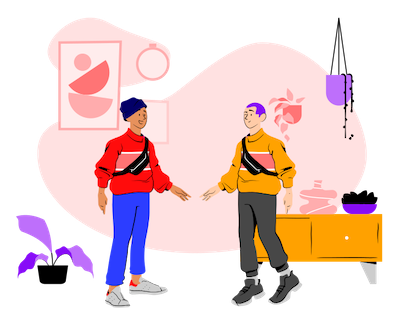|  | | | Hello language enthusiast! Uncover the captivating journey of Spanish learning, where we make mastering phrases like 'ser bonito', 'izquierda', 'leer', 'pobre', and 'historia' a delightful experience. |
| |
| |
|
|
ser bonito 'Ser bonito' in Spanish is translated as 'be nice' in English. This phrase is a combination of the verb 'ser' meaning 'to be', and the adjective 'bonito' meaning 'nice' or 'pretty'. The Spanish language often uses 'ser' with adjectives to describe inherent or lasting traits. So, 'ser bonito' would be used to describe someone or something that is inherently or generally nice or pleasant. Here's how to use it: Ser bonito es una bendición y una maldición. Debería ser bonito ver el amanecer desde esa montaña. El mar no podría dejar de ser bonito aunque lo intentara.
| |
|
izquierda The word 'izquierda' in Spanish is used to denote the direction 'left'. It's an adjective used to specify a direction or location. For instance, 'gira a la izquierda' translates to 'turn to the left'. It's also used in political context similar to English to refer to left-wing politics. Here's how to use it: Ve a la izquierda después de la rotonda. El perro está a la izquierda del gato. El baño es a la izquierda.
| |
|
leer 'Leer' corresponds to the act of interpreting written, typographic, or printed symbols for the purpose of communication. Here's how to use it: | |
|
pobre The Spanish word 'pobre' is normally used to describe a person, a country or a situation that lacks material possessions or money. It often has the same connotations as in English, and can also be used in a range of other situations. For example, it can describe someone's unfortunate circumstances, as in 'Es un pobre hombre' (He's a poor man), demonstrating sympathy or pity. Here's how to use it: No quiero ser pobre. Ese es un país pobre. Es una pena ser pobre.
| |
|
historia The Spanish word for 'story' is 'historia'. It can be used in a variety of contexts, just like in English. For instance, it can refer to a narrative or tale, as in a book, movie or anecdote. Additionally, it can also refer to history in a general context. For example, 'la historia del mundo' would be translated to 'the history of the world'. Thus, context is important to discern the intended meaning. Here's how to use it: Estoy estudiando historia en la universidad Él enseña historia en la escuela secundaria Esa es una historia interesante
| |
|
🤔🤔🤔 Do you KNOW (😂) how to use "conocer" and "saber" correctly? In English there is only "to know", but in Spanish when do you use either "conocer" or "saber"? | |
|
| Never stop learning, Mike from LangBites PS If you are enjoying these emails, buying me a coffee is much appreciated! 🙏🏼 | |
|
| You received this email because you signed up at LangBites.co. Click here to unsubscribe. |
| |
|
|
|

